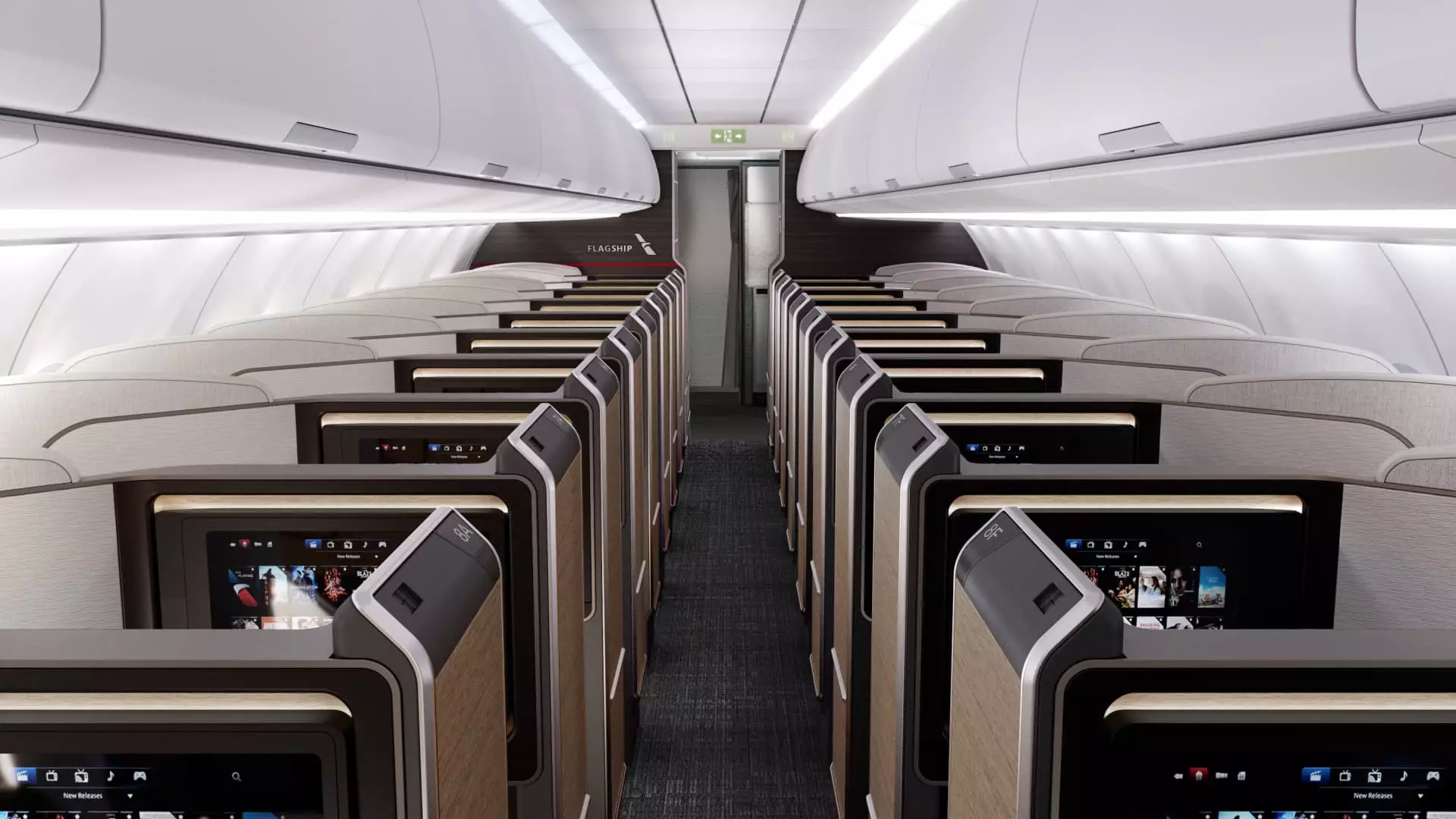In the competitive airline industry, carriers have spent decades trying to maximize the number of seats in coach class. However, a new trend is emerging as airlines shift their focus towards accommodating high-spending travelers. Passengers like Natalie Rasmussen refuse to settle for cramped seats in standard coach and instead opt for premium seating options. These premium seats, such as business class and premium economy, offer a more spacious and comfortable experience. As the demand for premium seats continues to rise, airlines are investing in outfitting their aircraft with high-end seats to attract and cater to these discerning travelers.
Natalie Rasmussen, an application scientist residing near San Jose, California, exemplifies the changing preferences of travelers. She acknowledges her aversion to flying in standard coach on long-haul flights and eagerly chooses business class or premium economy instead. These premium seating options, positioned between business and coach class, offer additional legroom, larger seat-back screens, and various other perks. Although they lack the luxurious lie-flat beds characteristic of first-class cabins, premium seats command significantly higher fares. This price premium becomes increasingly crucial for airlines as ticket prices generally decline and business travel’s recovery from the Covid-19 pandemic reaches a plateau.
The Pursuit of Luxury
Driven by customer demand, airlines find themselves engaged in a fierce competition to equip their new aircraft with upscale seating. The dominance of economy seats has seen a slight decline, with business-class seats showing a modest increase and premium economy seats experiencing even stronger growth. Premium economy seats now account for 6.4% of seats sold, up from 4.2% five years ago, while first-class seats have witnessed a decline. Renowned carriers such as Delta, JetBlue Airways, United Airlines, American Airlines, Finnair, and Lufthansa have recently announced upgrades to their first-class seats, the introduction of suites with sliding doors, and the expansion of premium economy cabins.
Extravagant First-Class Experiences
Airlines have gone to great lengths to enhance the first-class flying experience. Singapore Airlines, for example, provides customers with full-height doors, beds for travel companions, and the spaciousness of a small hotel room. Emirates even goes a step further by offering an onboard shower exclusively for first-class passengers on select aircraft. This investment in luxurious amenities reflects a shift from airlines merely offering transportation services to curating exceptional experiences within the cabin.
Unsurprisingly, the price disparity between premium seats and standard coach tickets can be substantial. For instance, a premium economy ticket on Delta Air Lines for a round-trip between New York and Paris was recently priced at $3,015, compared to $980 for a regular economy ticket on the same route. Similarly, United Airlines quoted nearly $1,850 for a premium economy ticket and $912 for a standard coach ticket on a similar itinerary. Furthermore, business class fares easily exceed $5,000 for the same route. As a result, premium seating options represent a lucrative segment within the $2.6 billion aircraft seating market.
The demand for premium seating has witnessed substantial growth in recent years. Delta Air Lines reported that premium seats accounted for 9% of seats sold in 2009. By 2019, this figure had risen to 28%, and the company anticipates a further increase to 30% by 2024. Delta predicts that sales from premium tickets, including extra legroom seats and international business class, will contribute to 35% of their projected $19 billion revenue for this year. In contrast, premium ticket sales accounted for just 24% of their $10 billion revenue in 2014. Similarly, American Airlines plans to expand its long-haul premium seats by more than 45% by 2026.
Adapting to Post-Pandemic Travel
In response to evolving passenger preferences after the pandemic, airlines such as Delta and United have unveiled new first-class seats for domestic flights, featuring privacy wings. This feature has become increasingly popular as passengers seek to maintain personal space and minimize contact with others during their journey. Striking the right balance between seating options has become crucial for carriers. Virgin Atlantic’s CEO, Shai Weiss, emphasized the importance of tailoring seating configurations to specific routes. For example, the airline offers more economy seats on routes favored by vacationers, while routes attracting premium travelers have a higher concentration of Upper Class seats.
The airline industry is witnessing a significant shift towards meeting the demands of high-spending passengers through the provision of upscale seating options. As travelers like Natalie Rasmussen prioritize comfort and experience, airlines are investing in premium seats to cater to this growing market segment. The rise in demand for premium seats represents an opportunity for carriers to increase revenues and differentiate themselves from the competition. Airline passengers can now look forward to a more luxurious flying experience as the industry continues to evolve and adapt to changing customer preferences.


Leave a Reply